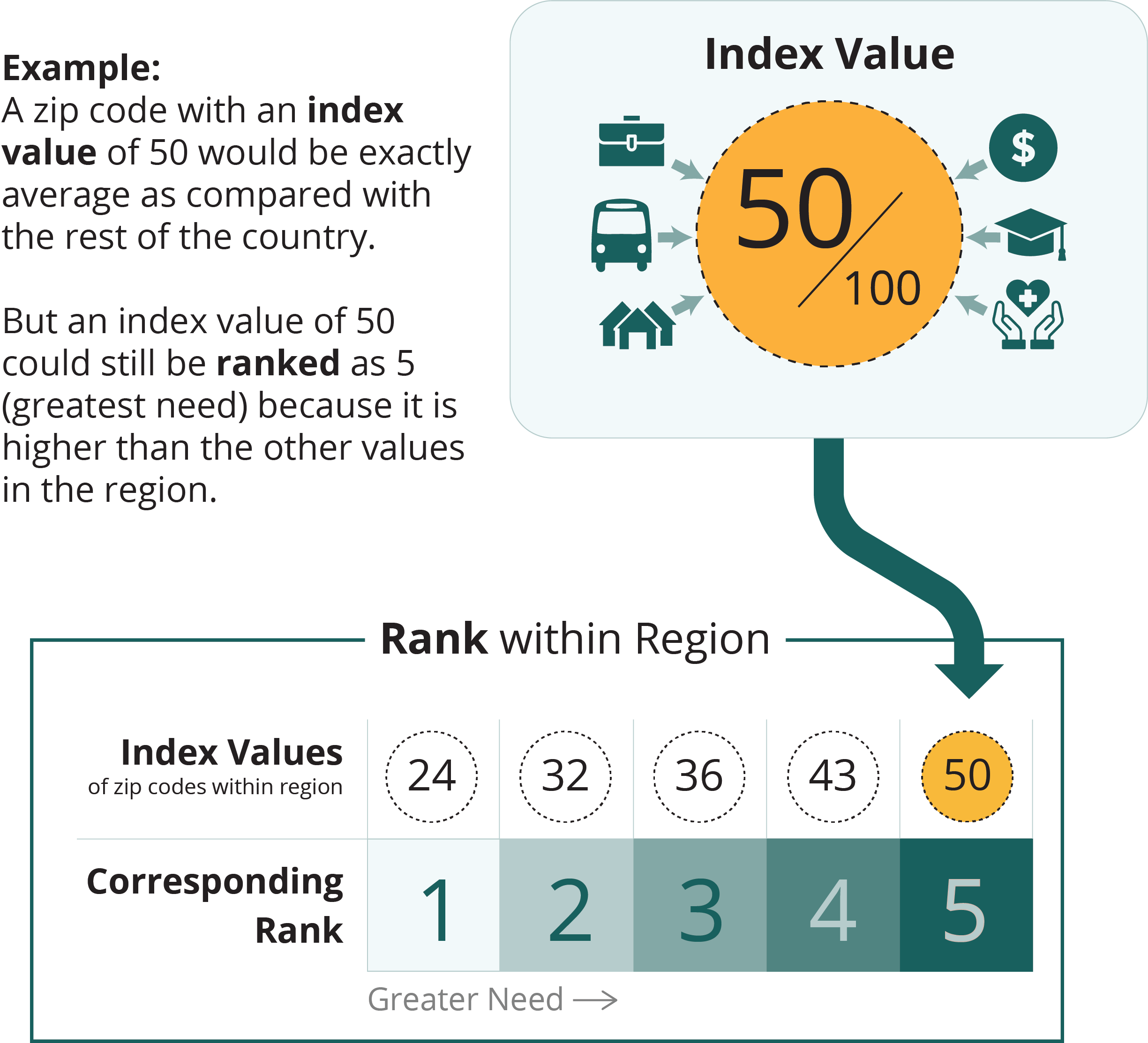SocioNeeds Index® Suite

The SocioNeeds Index Suite provides analytics around social determinants of health to advance equitable outcomes. Created by Conduent Healthy Communities Institute, each index summarizes multiple health and socioeconomic indicators into one validated composite score to help identify areas for action.
The SocioNeeds Index Suite can help:
- Justify and validate investments for prevention and early intervention
- Clearly communicate areas for shared action by healthcare, public health, social services, community organizations, business, and others
- Inform policies and interventions at the regional level
Click on each index below for an interactive map that visualizes each census tract, zip code, or county's index score within your service area from highest to lowest.
How it Works

Every community can be described by various health, social, and economic factors that can contribute to disparities in outcomes and opportunities to thrive. Each index in the SocioNeeds Index® Suite summarizes these factors and generates a composite index value to help identify areas for action for a range of topics.
How is the index value calculated?
Index values are generated based on validated indicators correlated with the outcome of interest. The national index value (from 0 to 100) is calculated for each zip code, census tract, and county in the U.S. Communities with the highest index values are estimated to have the highest needs correlated with the SocioNeeds Index Suite topic.
What do the ranks and colors mean?
Ranks and colors help to identify the relative level of need within a community or service area. The national index value for each location is compared to all other similar locations within the community area to assign a relative rank (from 1 to 5) locally. These ranks are used to color the map and chart for each index, with darker coloring associated with higher relative need.
Follow this link to learn more about the SocioNeeds Index Suite.
For example, a zip code with an index value of 50 would be average, as compared with the rest of the country, but an index value of 50 could be high, compared to the values of other zip codes in your selected area.

